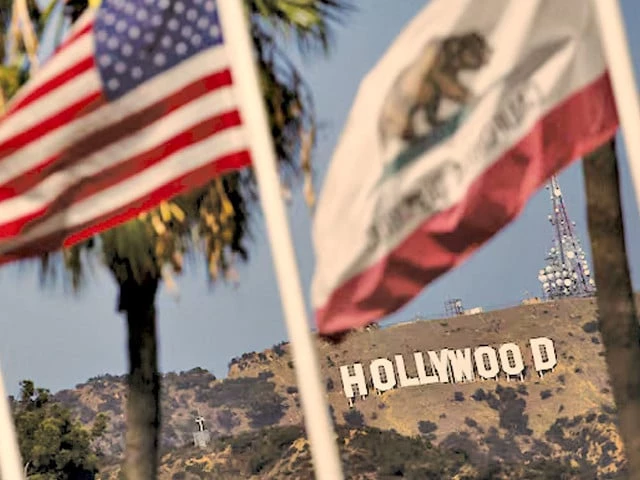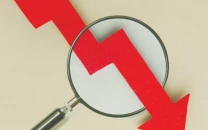Tariff talk fails to dim global spotlight
Proposed 100% tax raises fears of higher streaming costs but global production powers remain unfazed

The film world's cameras are still rolling from London to Sydney, even as US President Donald Trump's renewed threat of a 100% tariff on foreign-made movies casts another political shadow over global entertainment.
From Britain's busy soundstages to Hungary's humming studios and Australia's thriving post-production houses, the international film industry remains unshaken.
Trump's proposal, designed to curb the outflow of American film jobs and lure production back home, revives an idea he first floated in May - one that briefly sent shockwaves through Hollywood, freezing projects and unsettling financiers.
New data from industry tracker ProdPro suggests that while overall global production spending has dipped by 15% over the past year, there's little sign of Hollywood retreating from its lucrative overseas bases.
"We're not seeing anything that suggests studios are shifting production back to the US because of the tariff threat," said ProdPro's chief executive, Alexander LoVerde.
The United States remains the world's largest production market, spending $16.6 billion domestically in the past year. Yet American studios and streaming giants poured an even greater $24.3 billion into international projects, drawn by lower costs, skilled crews, and generous tax incentives.
The United Kingdom stands out as a clear beneficiary, pulling in $8.7 billion in production spending, fuelled by blockbusters like Disney's 'Star Wars: Starfighter' slated for 2027. Canada follows with $6.4 billion, while Australia, Ireland, Hungary and Spain together account for nearly a quarter of all global production spending.
The shift abroad began long before Trump's trade rhetoric. The pandemic and subsequent Hollywood strikes merely accelerated it. "Australia became a bit of a production bubble where, particularly in Queensland, filming could continue even as the rest of the world shut down," said Dr Kirsten Stevens of the University of Melbourne. Governments have actively reinforced this migration. Prague raised its film rebate to 25% earlier this year, while Britain offers up to 25.5% for qualifying productions, with even higher credits for animation and independent films. Hungary, now a major European filming hub, continues to lure big titles.
"Hungarian soundstages are currently operating at full capacity with both international and domestic productions," said Csaba Kael, Hungary's government commissioner for film development.
Still, Hollywood's calm masks growing unease about the ripple effects for audiences. Trump's proposed tariff would not only affect studios but also drive up costs for streaming platforms reliant on foreign-made content - a burden likely to land on viewers' monthly bills. Foreign productions make up nearly half of Netflix's original library and significant portions of Disney+, Apple TV+ and Warner Bros. Discovery's catalogues. Analysts warn that a 100% tariff could double their content acquisition costs, triggering substantial price hikes.
According to Citi analyst Jason Bazinet, Netflix alone could face as much as $3 billion in additional annual expenses. His analysis, reported by The Wrap, suggests the company would need to raise its average revenue per user by around 7% to offset the impact.
For millions of American households already grappling with price fatigue, that is unwelcome news. On average, US consumers spend $69 monthly on video streaming - a 13% increase from last year.
Even before the tariff threat, streaming platforms had been steadily raising prices: Disney+ increased its ad-supported plan from $9.99 to $11.99, while Apple TV+ jumped 30% to $12.99. Disney+'s premium tier now stands at $18.99 a month, according to CBS News and Fox Business. As inflation and rising living costs bite, viewers are cutting back. Deloitte's Digital Media Trends 2025 survey found that nearly 60% of adults are reconsidering paid subscriptions, while traditional cable continues to decline - down to 49% from 63% three years ago.
In response, many consumers are shifting toward free, ad-supported alternatives such as Tubi, Pluto TV and Roku Channel. Public library platforms like Kanopy and Hoopla Digital also offer free streaming of films and documentaries.
Financial experts are advising households to adopt smarter subscription habits. CNET's subscription management guide suggests rotating one service at a time, which can save up to $360 annually. Others recommend downgrading to ad-supported tiers, typically $5 to $7 cheaper than premium plans. Consumer research shows that 57% of users already choose these lower-cost options.
Despite the economic tension, many in the film industry believe tariffs are the wrong lever to pull. "The film industry dislikes uncertainty," said Atlanta-based entertainment lawyer Stephen Weizenecker. "Once it starts to hesitate, it means a project stops altogether."
A coalition of unions, guilds and veteran actor Jon Voight has instead urged the administration to expand tax incentives for domestic productions rather than penalise imports. Lawmakers have introduced the bipartisan CREATE Act, which would extend a federal tax deduction for US film and television projects and raise spending caps - a measure set to expire in December unless renewed. For now, the global entertainment engine continues to roar. From the glistening sets of Leavesden and Pinewood to the visual-effects studios of Sydney and Budapest, filmmakers show little sign of slowing.
As one London producer summed up the industry's spirit: "The film business doesn't stop for politics. The story always finds a way to get made."




















COMMENTS
Comments are moderated and generally will be posted if they are on-topic and not abusive.
For more information, please see our Comments FAQ